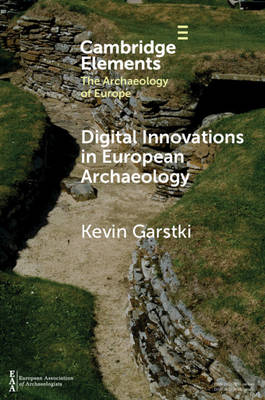
- Afhalen na 1 uur in een winkel met voorraad
- Gratis thuislevering in België vanaf € 30
- Ruim aanbod met 7 miljoen producten
- Afhalen na 1 uur in een winkel met voorraad
- Gratis thuislevering in België vanaf € 30
- Ruim aanbod met 7 miljoen producten
Zoeken
Omschrijving
European archaeologists in the last two decades have worked to integrate a wide range of emerging digital tools to enhance the recording, analysis, and dissemination of archaeological data. These techniques have expanded and altered the data collected by archaeologists as well as their interpretations. At the same time archaeologists have expanded the capabilities of using these data on a large scale, across platforms, regions, and time periods, utilising new and existing digital research infrastructures to enhance the scale of data used for archaeological interpretations. This Element discusses some of the most recent, innovative uses of these techniques in European archaeology at different stages of archaeological work. In addition to providing an overview of some of these techniques, it critically assesses these approaches and outlines the recent challenges to the discipline posed by self-reflexive use of these tools and advocacy for their open use in cultural heritage preservation and public engagement.
Specificaties
Betrokkenen
- Auteur(s):
- Uitgeverij:
Inhoud
- Aantal bladzijden:
- 75
- Taal:
- Engels
- Reeks:
Eigenschappen
- Productcode (EAN):
- 9781108744126
- Verschijningsdatum:
- 10/12/2020
- Uitvoering:
- Paperback
- Formaat:
- Trade paperback (VS)
- Afmetingen:
- 152 mm x 229 mm
- Gewicht:
- 131 g

Alleen bij Standaard Boekhandel
+ 63 punten op je klantenkaart van Standaard Boekhandel
Beoordelingen
We publiceren alleen reviews die voldoen aan de voorwaarden voor reviews. Bekijk onze voorwaarden voor reviews.











